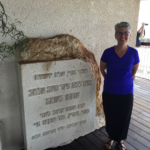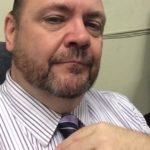Americans know it’s not always pleasant to watch free speech in action.
As we witnessed this summer in Charlottesville, free speech can be hateful. It can be corrosive and demeaning. And yet, as Americans, we are dedicated to protecting free speech to a degree that our counterparts in other countries find astonishing—even ill-considered. It’s part of our Constitution, and part of our national character.
A 2015 Pew Research Center study of attitudes in 38 countries found that Americans are more tolerant of free speech than citizens of any other nation. Seventy-one percent of US respondents said they believe people should be able to say and write what they like without government interference or censorship.
Our full-throated commitment to free speech doesn’t mean we always have an easy relationship with it—the First Amendment has faced countless legal challenges from those who argue that our freedom of speech has actually become a freedom to intimidate, or a freedom to instill fear. That tension was famously on display in 1978, when the city government of Skokie, Illinois, filed a suit to stop neo-Nazis from marching through their town. At the time, Skokie, a suburb of Chicago, was home to an unusually high number of Holocaust survivors, and the mayor and other officials argued that the neo-Nazis’ right to free speech paled in comparison to the survivors’ right not to be terrorized. The ACLU stepped in to defend the neo-Nazis’ First Amendment rights, and the case went all the way to the US Supreme Court, which ruled in favor of the ACLU and the First Amendment. The neo-Nazis never marched in Skokie—they took their awful, legally-protected speech to Chicago, instead.
As a writer and researcher at the Anti-Defamation League’s Center on Extremism, I know that the Skokie case remains painfully relevant, even today. I know how challenging it can be to balance the legal right to free speech with the much more human need for all citizens to feel safe.
My job involves monitoring and writing about some of the most hateful groups and people in America—from the Ku Klux Klan to neo-Nazis to anti-Muslim extremists. Every day, my colleagues and I are confronted with images and words of hate and vitriol. We read about Richard Spencer’s dreams for a white ethnostate. We listen to Milo Yiannopoulos disparage transgender people. We watch videos of speeches by anti-Muslim bigots like Pamela Geller and Frank Gaffney, who capitalize on fear and xenophobia and blame an entire religion for the actions of a few extremists.
We listen to these hateful people speak because it’s part of our jobs. We also listen because we need to know what they are saying. Their speech is real, and it affects people’s lives. And that’s the main reason we need to protect their right to speak publicly and freely.
Hateful speech that is muffled or suppressed will still exist. It will just go underground, where it has the potential to become even more powerful. People who are prone to extremism are often drawn to ideas and movements that society deems inappropriate.
I’m also a firm believer in countering vile speech with good speech. Whenever neo-Nazis march, the rest of us have to show up to peacefully protest the swastikas, racism and anti-Semitism on display. Whenever a Klan group leaves recruitment fliers on suburban doorsteps, the rest of us need to come together and make sure that every member of our community feels supported and safe.
The First Amendment is a right that confers huge responsibility. At this moment in history, the responsibility part of the equation seems to be falling to those of us who believe in civil rights, equality, and kindness.
Students who are keeping up with the news will undoubtedly have questions, and possibly concerns, about the practicability and ethics of protecting free speech, even when that speech feels confrontational, offensive, or just plain wrong. It’s a conundrum that can feel uncomfortable, and it’s important to allow the conversation to be in that place of discomfort. That’s where real critical thinking happens—about individual rights and the responsibilities inherent in living in a democracy. Ask your students how they feel about the rights of neo-Nazis to march in Skokie. Ask them how they might respond to a hateful person coming to speak in their city. Allow them to take up the different sides of the arguments, and help them understand that while the First Amendment is a bedrock principle, applying it fairly and objectively isn’t always easy.
After all, it’s no small feat to respect an individual’s right to express bigoted ideas. But that’s what Americans have always done. Just as one bigot has the right to speak his mind, the rest of us have a responsibility to let him know we’re watching, we oppose his hate—and we’re not going away.
Jessica Reaves is the senior writer and communications specialist at ADL’s Center on Extremism. The views expressed here are hers alone.





 English
English


